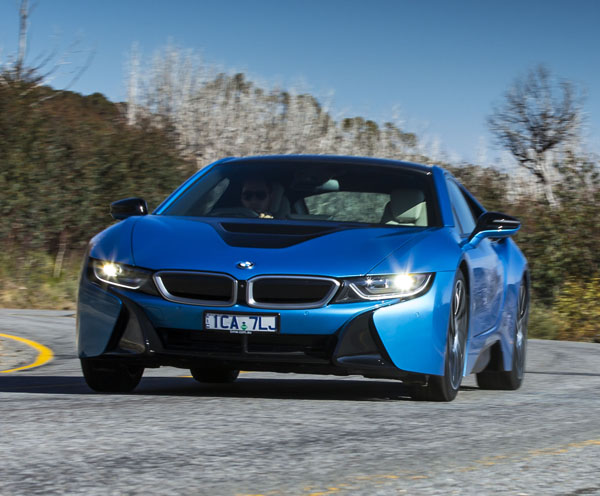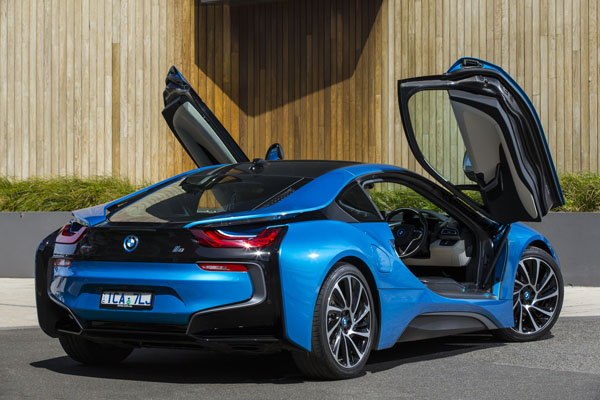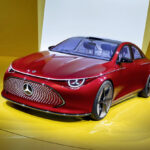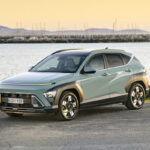BMW turns one hundred in 2016 and is looking more to the future than the past. Which is perhaps understandable when you realise that the company was set up to make aircraft engines during WW1. The Australian importer chose not to mention the war during the recent media event setup to allow journos to drive a huge range of its vehicles.
Bayerische Motoren Werke translates into English as Bavarian Motor Works, a somewhat mundane title for what has become an iconic marque. In any case it’s universally called BMW by everyone.
Interestingly, one of the most successful aircraft engines in those early days was a straight-six, the configuration that later became synonymous with BMW’s brilliant engine designs.
BMW car production didn’t begin until almost ten years after the event we won’t mention. By then the British and the Germans were talking civilly to one another again and the first BMW car was the Dixi, a licensed copy of the hugely successful Austin 7.
On a personal history note, BMW was the first company to invite me to Europe during my early days as a motoring journo, way back in 1985. Legendary Australian motoring writer Pedr Davis was a longtime Austin 7 enthusiast and had arranged to borrow a Dixi from BMW’s museum. He asked me to act as photographer as he drove it around, later giving me a ride in the tiny machine.
Anyhow, back to the future. Though BMW gave us the choice of 39 vehicle to test drive I chose to concentrate on the starting point of the next 100 years by taking both BMW electric ‘i’ cars for test drives.
Previously I had only tested a BMW i3 in city and suburban areas, its natural habitat. There it performed brilliantly, having a spacious interior, an ultra tight turning circle, excellent all round vision and (most importantly) the ability to gather back energy every time it slowed down, storing it in the batteries for future use.
The only real criticism after the suburban testing was the somewhat vague steering. This is exacerbated in country driving, particularly when strong crosswinds buffeted the car about at times. Other than that, the instant acceleration and the exceptional torque that only electric motors can provide made it delight to drive.
Next came the BMW i8 supercar, which is an electric-petrol hybrid not a pure electric like the i3. After squeezing my ageing body through the doors (I know it has become traditional to make weird door designs in supercars, but they really are impractical for day to day use…) I settled into the driver’s seat and trundled silently under electric power out of the carpark. Stopped. Then gave it a bootfull.
It’s simply brilliant. There’s a loud V8-like snarl from the three-cylinder petrol engine (that’s right, three cylinders) sitting just behind the cabin is the sort of sound that brings prickles to the back of the neck of car enthusiasts. Love it.
There was presumably a whine from the electric motor but that was totally drowned out as the big white BMW supercar leapt raucously from stationary to 100 km/h in just 4.4 seconds. Love that, too.
The turbocharged petrol engine develops 170 kW of power and 320 Nm of torque, the electric motor has 96 kW, and 250 Nm of torque at zero (yes, zero!) revs. As the two powerplants produce their maxima at different times the best combined figure is 266 kW of power and a huge 570 Nm of torque.
Back off the throttle and the Bimmer become eerily quiet as the petrol engine shuts down and the electric motor take over all propulsion, at least in relatively gentle running. Hills and acceleration require the petrol engine to kick in and help.
The low centre of gravity gives the big i8 excellent grip in corners and, again, the instant throttle response is appreciated as it provides immediate adjustment of corners lines.
There’s no doubt electric cars are the way of the future, being not only clean and green, but also enjoyable to drive. In these early days they are significantly more expensive than conventional vehicle. In most civilised countries governments provide financial incentives to encourage electric and hybrid cars. But not in Australian where powers that be provide absolutely no help…













